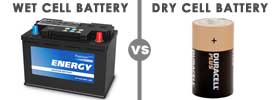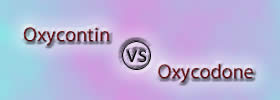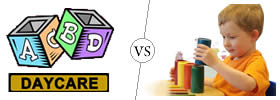Difference between Dandruff and Lice
Key difference: Dandruff is a common, inflammatory skin condition that causes flaky, white to yellowish scales to form on oily areas such as the scalp or inside the ear. Head lice, on the other hand, is a parasitic infestation. Head lice are tiny, wingless, parasitic insects that live and feed on blood from your scalp.
 Both dandruff and lice are common scalp conditions that affect a number of people. The main difference between lice and dandruff is that dandruff is more commonly perceived as dry skin and its flaking, whereas, lice are parasitic infestation.
Both dandruff and lice are common scalp conditions that affect a number of people. The main difference between lice and dandruff is that dandruff is more commonly perceived as dry skin and its flaking, whereas, lice are parasitic infestation.
Dandruff is a common, inflammatory skin condition that causes flaky, white to yellowish scales to form on oily areas such as the scalp or inside the ear. As the epidermal layer of skin continually replaces itself, cells are pushed outward where they eventually die and flake off. This process usually takes up to a month on average; however, for people with dandruff, skin cells may mature and be shed in 2–7 days. This results in dead skin cells being shed in large, oily clumps, which appear as white or grayish patches on the scalp, skin and clothes, what we see as dandruff.
Head lice, on the other hand, is a parasitic infestation. Head lice are tiny, wingless, parasitic insects that live and feed on blood from your scalp. They commonly affect preschool and elementary school-aged children, who unknowingly infect each other and others close to them, such as family members. However, getting a head lice infestation is not a sign of bad personal hygiene or an unclean living environment. It is an itchy infestation commonly spread through close personal contact and by sharing personal belongings.
 The most common way to differentiate between dandruff and head lice is to check the scalp for louse, as dandruff looks very similar to nits (lice eggs). However, if a grown louse cannot be found, a way to ensure lack of infestation is to check after shampooing the hair thoroughly. If the white flacks have disappeared from the scalp then it is dandruff, however, in case of head lice, the white flecks will remain and so will the itchiness.
The most common way to differentiate between dandruff and head lice is to check the scalp for louse, as dandruff looks very similar to nits (lice eggs). However, if a grown louse cannot be found, a way to ensure lack of infestation is to check after shampooing the hair thoroughly. If the white flacks have disappeared from the scalp then it is dandruff, however, in case of head lice, the white flecks will remain and so will the itchiness.
A detailed comparison between Dandruff and Lice:
|
|
Dandruff |
Lice |
|
Other names |
Cradle cap, scurf, Pityriasis simplex capillitii, Seborrheic eczema, Seborrheic dermatitis |
Pediculosis capitis |
|
Nature |
A common scalp disorder – Skin condition |
Parasite – living organism |
|
Description |
Dandruff is a common, inflammatory skin condition that causes flaky, white to yellowish scales to form on oily areas such as the scalp or inside the ear. As the epidermal layer of skin continually replaces itself, cells are pushed outward where they eventually die and flake off. Extreme cell turnover and clumping of dead cells become dandruff. |
Head lice are tiny, wingless, parasitic insects that live and feed on blood from the scalp. One louse can lay as many as 100 eggs. A louse can live up to 30 days on a human scalp, and up to 2 days without food or nutrition. The nits (eggs) can live up to 2 weeks with out nutrition but are susceptible to temperature.
|
|
Affects |
Almost half of the population at the post-pubertal age and of any sex and ethnicity. |
Head lice are a very common problem, affecting millions of people each year, especially preschool and elementary school-aged children and their close contacts. |
|
Causes |
A combination of dry skin, an over production of skin oil and irritation from a yeast called malassezia. Individual susceptibility; tends to run in families. Stress, fatigue, weather extremes, oily skin, infrequent shampoos or skin cleaning, use of lotions that contain alcohol, skin disorders (such as acne), or obesity may increase the risk. Can also be a manifestation of an allergic reaction to chemicals in hair gels, sprays, and shampoos, hair oils, or sometimes even dandruff medications like ketoconazole. |
Spreads through close personal contact, especially head to head contact and by sharing personal belongings, such as caps, hats and scarves, brushes and combs, hair decorations, such as barrettes, and headphones. It may even rarely spread through home furnishings, such as towels, clothing, blankets, pillows, upholstered furniture. |
|
Risk factors |
|
Females of all ages get head lice more often than males do. The greatest risk factor for getting head lice is coming into contact with someone who already has lice. Cleanliness and personal hygiene have little bearing on whether one gets lice.
|
|
Symptoms |
Skin lesions, plaques over large area, greasy, oily areas of skin, skin scales -- white and flaking, or yellowish, oily, and adherent -- "dandruff", itching -- may become more itchy if infected, mild redness, hair loss |
Intense itching, adult lice on scalp, lice eggs (nits) on hair shafts. |
|
Severity |
Mild, often worsens in winter. |
Lice may cause one to scratch the head so vigorously that the skin breaks. These scratches may get infected. |
|
Treatment |
Frequent or daily use of over-the-counter dandruff or medicated shampoos. Apply mineral oil on scalp or affected area. |
Comb wet hair with a fine-toothed or nit comb to remove lice from wet hair. Repeat every three to four days for at least two weeks. Nonprescription shampoo that's specifically formulated to kill lice. |
|
When to see a doctor |
If itching is persistent after several weeks of experimenting with over-the-counter (OTC) dandruff shampoos, or if scalp becomes red or swollen. |
If nonprescription shampoo doesn't kill the lice, the doctor can prescribe a stronger, prescription shampoo. If scratches are infected. |
Image Courtesy: pharmainfo.net, myhairdressersearch.com









Add new comment